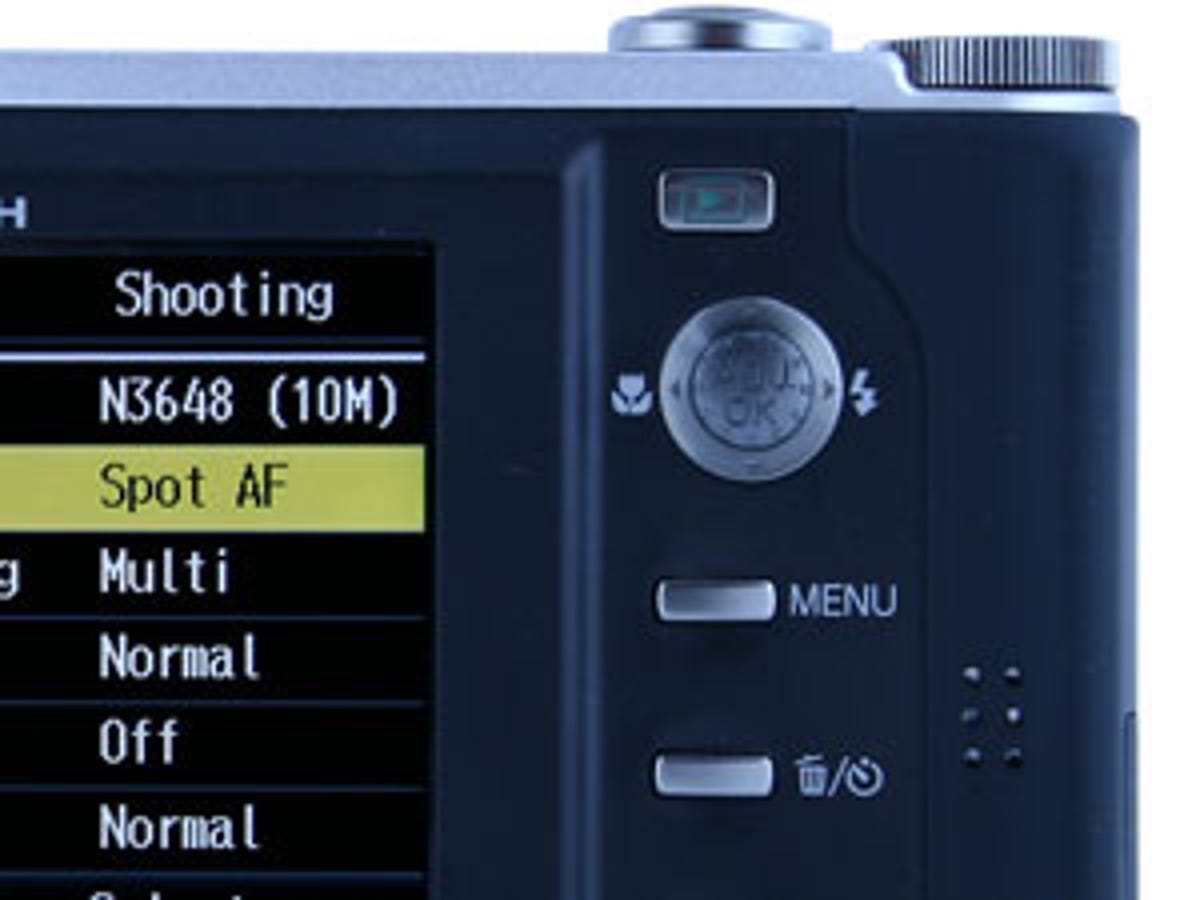 Why You Can Trust CNET
Why You Can Trust CNET Ricoh R8 review: Ricoh R8
With the Caplio R7 rating as one of our favourite point-and-shoots of last year, the Ricoh R8 has a lot to live up to -- and it does. While you don't have many manual controls, this retro-style compact is feature rich and certainly tweakable, appealing to both novices and professionals
The Ricoh R8 may be the numerical successor to the Caplio R7, but the Caplio branding has gone and the style is completely revamped. The R8 is still at the pricier end of the compact scale at a suggested retail price of £249.99, but it is also packed with features. With the R7 rating as one of our favourite point-and-shoots of last year, the R8 certainly has a lot to live up to.
The Good
The Bad
The Bottom Line
Design
Ricoh has abandoned the R7's colourful contemporary look and given the R8 a solid, retro style. Our model's black body and gunmetal accents are nicely finished by the matte black lens barrel, although we're less enamoured of the two-tone version. The rubberised grip is comfortable at the back but toothless at the front. It's substantial but not chunky, with a large 69mm (2.7-inch) LCD screen.

Controls are kept simple: a menu button, delete/timer button, a display toggle and playback button are on the back, with a mode wheel on the top. The wheel gives access to different scenes and two customisable user settings. It's a small thing, but we like that the wheel rotates 360 degrees, even if it does have a gritty feel to the movement.
One of our favourite parts of the R7 was the mini-joystick, which has here been flattened to more of a four-way rocker. We found this flatter control was very thumb-friendly, although the grippy raised dots did get irritating after extended use.
Features
The R8 has a 35mm-equivalent focal length of 28-200mm, and we're pleased with the width of the images. The 7.1x zoom is quick for crash zooms, but at the same time, it's brisk for fine alterations.
The yellow and grey menus look suspiciously familiar to those on Olympus cameras, and are as straightforward to use. Our only quibble is that accessing the scene mode list requires superfluous fiddling. We're impressed with the one-touch access to exposure compensation, white balance and others settings via the joystick. This can be customised so your favourite settings are instantly available.
Like the R7, the R8 doesn't include shutter or aperture priority or full manual mode. Exposure compensation allows you to alter the exposure on one sliding scale rather than having to alter shutter and aperture individually, which we admit is more novice-friendly. It just means that more experienced photographers have to somewhat blindly trust the camera.
That said, it's possible to set the maximum ISO level and minimum shutter or aperture speeds, so although you don't have actual manual control, you can set the parameters of the automatic mode.
Aside from the lack of a manual mode, the R8 is certainly tweakable. There are bracketing options for white balance and colour settings as well as the usual exposure. There are also several burst modes, and the ability to record two differently-sized images simultaneously.
Performance
The large lens takes only 2 seconds to spin out and capture an
image from start up. After that, the camera takes another 2 seconds
between shots. In keeping with the feature-rich theme, there are three
continuous modes on the R8: burst mode, and two modes that capture 16
low-resolution frames in 2 seconds, recording them as one large image.
Burst mode will merrily trundle on capturing 0.7 frames per second for
over five minutes with no sign of slowing or stopping, which is
astounding stamina for a compact.
Battery life was also impressive, with the R8 powering through 200 shots in everyday use -- including lots of flash use -- and 500 test shots. After all this, the battery meter was still more than half full. Strangely, on one occasion the camera crashed -- which is a first in our experience -- but this may have been a fault with our model.
Image quality
Portraits
are good, although skin tones can be washed out. We found that delving
into the menus and tweaking every shooting option going gave the best
results, which was made less of a daunting prospect by the excellent
manual, and option to save our adjustments.
The adjustable intensity of the flash helped in low-light to lift the subject from the darkened background, but again skin tones were anaemic. Low-light performance was pleasing, particularly when we capped the aperture, shutter and, crucially, the ISO speed. Tinkering with the exposure compensation gave us some cosy low-light pictures at ISO 400 that were virtually free of image noise, although without any feedback on what the shutter and aperture were set to these literally were shots in the dark.
Conclusion
Although we miss actual control over the aperture and shutter, the
Ricoh R8 allows you to wield an enormous amount of power over your images. There
are a huge amount of customisable options, with the emphasis on
acessibility as opposed to dumbing down. Novices unimpressed by the
large zoom might prefer a sleeker camera such as the Canon IXUS 860 IS, while the experienced snapper after a backup model may prefer something with more traditional controls, like the Nikon P5000. Still, embracing the R8's myriad options will be a rewarding experience for anyone.
Edited by Jason Jenkins
Additional editing by Shannon Doubleday


